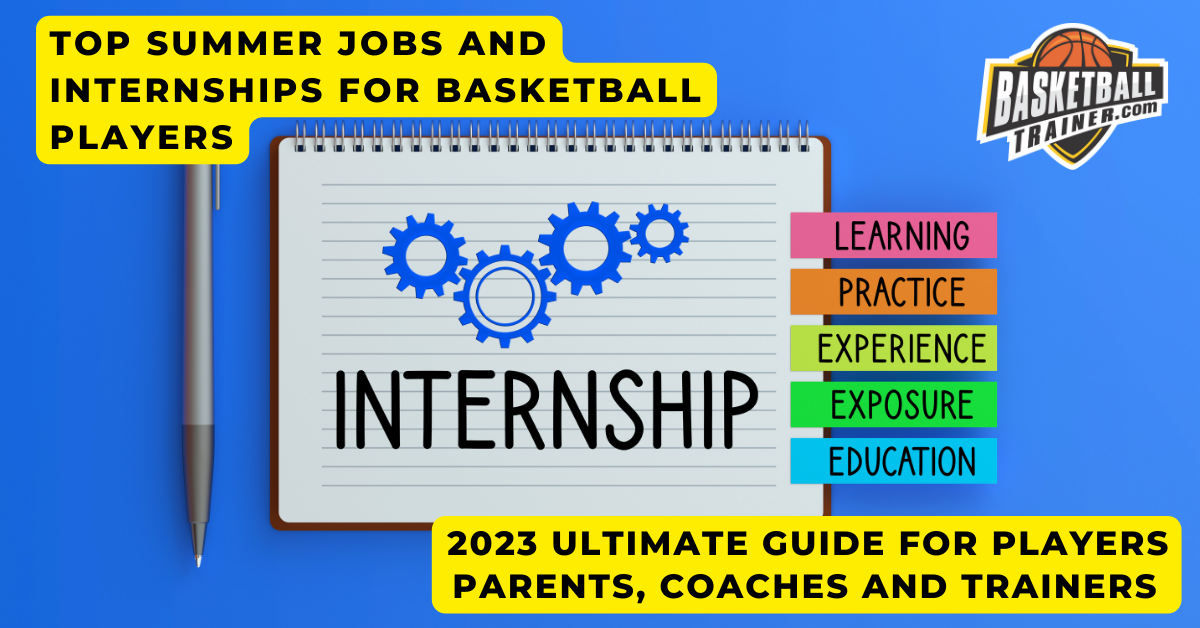Questions Basketball Parents Ask Trainers… and my frequent short answers (usually more customized)
How can I get them to make the team?
- Encourage consistent practice and improvement of fundamental skills.
- Attend tryouts and showcase their abilities confidently.
- Seek feedback from coaches and work on areas of improvement.
How do I get my player to shoot more?
- Build their shooting confidence through repetition and positive reinforcement.
- Encourage them to take open shots and trust their skills.
- Practice shooting in game-like situations to enhance decision-making.
How can we make him more aggressive?
- Instill a competitive mindset: Encourage them to embrace challenges and always give their best effort.
- Develop physicality: Work on strength and conditioning to improve their physical presence on the court.
- Teach assertiveness: Help them understand the importance of attacking the basket, being proactive on defense, and playing with intensity.
- Focus on footwork skills, vision, and self confidence that help aggressiveness.
Can you help with scoring?
- Yes! We can focus on developing scoring techniques such as shooting, driving to the basket, and creating scoring opportunities.
- Teach them offensive strategies and provide personalized training to enhance their scoring abilities.
Can you help them be tougher basketball players?
 Mental toughness training: Teach them to stay focused, overcome adversity, and maintain a positive mindset.
Mental toughness training: Teach them to stay focused, overcome adversity, and maintain a positive mindset.- Physical conditioning: Develop their strength, endurance, and agility to withstand the physical demands of the game.
- Emphasize resilience: Encourage them to bounce back from mistakes and keep pushing forward.
Can you teach them to shoot?
- Break down shooting mechanics: Focus on proper footwork, hand placement, and follow-through.
- Provide shooting drills and exercises to develop muscle memory.
- Offer personalized feedback and corrections to improve shooting form and accuracy.
Can you help them with fundamentals?
- Absolutely! We prioritize fundamental skills such as dribbling, passing, shooting, and defense.
- Utilize a variety of drills, practice techniques, and game simulations to reinforce fundamental concepts.
They aren’t getting playing time, can you help?
- Understand the coach’s expectations: Encourage open communication with the coach to address concerns and seek guidance on areas of improvement.
- Work on specific skills: Identify areas where improvement is needed and focus on developing those skills.
- Exhibit a positive attitude and strong work ethic during practices to increase the chances of earning more playing time.
Can you help them make an AAU or Select Club?
- Evaluate their skills: Identify strengths and areas for improvement.
- Provide targeted training to enhance their skills and increase their chances of being noticed by AAU or Select Club coaches.
- Assist with the selection process by guiding them through tryouts and offering advice on navigating the competitive landscape.
Their coach sucks, can you help them mentally?
 Foster a positive mindset: Teach them to focus on their own growth and improvement, regardless of the coaching situation.
Foster a positive mindset: Teach them to focus on their own growth and improvement, regardless of the coaching situation.- Encourage resilience and adaptability: Help them understand that challenges can be opportunities for personal development.
- Provide mental skills training: Teach techniques such as visualization, goal-setting, and self-talk to maintain a positive mental state.
Questions Parents Should Ask More… Because The Focus Needs To Be Here Too!
How can my player become the best basketball teammate?
- Emphasize the values of teamwork, communication, and selflessness.
- Encourage your player to support and uplift their teammates, both on and off the court.
How can my player make others better?
- Develop their basketball IQ to enhance decision-making skills.
- Teach them effective passing techniques, court vision, and the ability to create scoring opportunities for teammates.
What would it take for my player to become the defensive stopper on their team?
- Focus on developing defensive fundamentals such as footwork, positioning, and anticipation.
- Instill a strong work ethic, discipline, and the willingness to study opponents’ tendencies.
What leadership actions can my player learn?
- Teach your player to lead by example through hard work, dedication, and a positive attitude.
- Develop their communication skills, decision-making abilities, and problem-solving techniques.
How can you train my player to get double-digit assists?
- Enhance their court vision and decision-making through game-simulated situations in practice.
- Teach them to read defenses, execute accurate passes, and understand offensive systems.
How can my player have great relationships with coaches?
- Encourage respect and open communication with coaches.
- Teach them to be receptive to feedback, demonstrate a strong work ethic, and show a willingness to learn and improve.
What life skills do you teach that my child can use off the court?
- Instill discipline, teamwork, perseverance, and time management skills.
- Teach goal-setting, problem-solving, and the importance of maintaining a healthy lifestyle.
How do you help my child grow in confidence and self-love?
- Provide positive reinforcement, constructive feedback, and a supportive environment.
- Help them set realistic goals, celebrate successes, and develop a positive self-image.
How can basketball help my child in their career?
- Basketball develops valuable skills such as teamwork, leadership, discipline, and resilience. Here at Austin Youth Basketball, we also work on vision, accountability, showing up, trust, communication, and execution.
- These qualities can be transferable to various careers, showcasing their ability to work well in teams, manage time effectively, and overcome challenges.
What grades does my child need to become a college basketball player?
- College academic requirements vary, so research specific institutions of interest.
- Emphasize the importance of maintaining good grades and meeting eligibility requirements set by the NCAA or other governing bodies.
How can you help my child with off-court challenges?
- Provide guidance and support in areas such as time management, goal-setting, and work-life balance.
- Offer mentorship and advice to help them navigate challenges outside of basketball.
What communication methods do you teach and model through basketball?
- Teach effective verbal and non-verbal communication skills on the court.
- Emphasize active listening, clear and concise communication, and positive body language.
Who were your basketball mentors? How do you incorporate that into your teaching?
- Share personal experiences and lessons learned from mentors. My mentors include NBA coaches and trainers whose workouts I watched, learned from, and participated in. But frankly, I learn from everyone, including my students.
- Incorporate their teachings into coaching methods, providing a well-rounded training experience.
What would your player development plan be for my player, specific to them?
- Conduct a thorough assessment of your child’s current skills and areas for improvement.
- Create a personalized development plan that targets their specific needs and goals.
How does your teaching differ from the “fundamentals” everyone says they are teaching?
- My teaching not only emphasizes fundamental skills but also focuses on decision-making, situational awareness, and game-specific techniques.
- I provide individualized attention and tailor training sessions to address the unique needs of each player, going beyond generic fundamentals.
Why are you a basketball trainer?
- I am passionate about basketball and dedicated to helping players reach their full potential.
- Being a trainer allows me to share my knowledge, inspire young athletes, and make a positive impact on their lives both on and off the court.
How can my child use basketball to get a great education?
- Basketball can provide opportunities for scholarships and college admissions.
- Emphasize the importance of maintaining good grades, researching colleges with basketball programs, and actively engaging with coaches and recruiters.
How can my player become more coachable?
- Encourage a growth mindset: Teach them to embrace challenges, learn from mistakes, and be open to feedback.
- Foster a positive attitude: Emphasize the importance of respect, discipline, and being receptive to coaching instructions.
- Develop a strong work ethic: Encourage consistent effort, dedication to improvement, and taking responsibility for their own development.
- Cultivate effective communication: Teach them to ask questions, seek clarification, and actively engage in discussions with coaches.
As an Austin basketball trainer, my aim is to guide and support young players in their basketball journey, while also nurturing their character, leadership skills, and personal growth. We love parent questions and involvement and aim to partner with families and ambitious basketball player.










